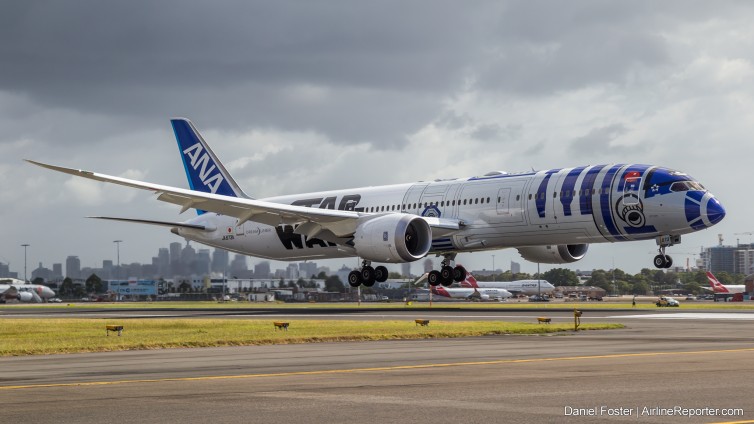
ANA returns to Sydney with the Star Wars 787-9
All Nippon Airways (ANA) has returned to Sydney after a 16-year hiatus, operating their Boeing 787-9 Dreamliners from Tokyo’s Haneda Airport. A stand-out from any other inaugural flight, the ANA Star Wars jet made its debut appearance in Australia’s largest city to celebrate this special event, as well as the upcoming film. As an avid Star Wars fan, I was compelled to be present for the arrival of this work of art.
As exciting as the prospect of ANA returning to Sydney was, the highlight for me was the aircraft tour shortly after arrival.
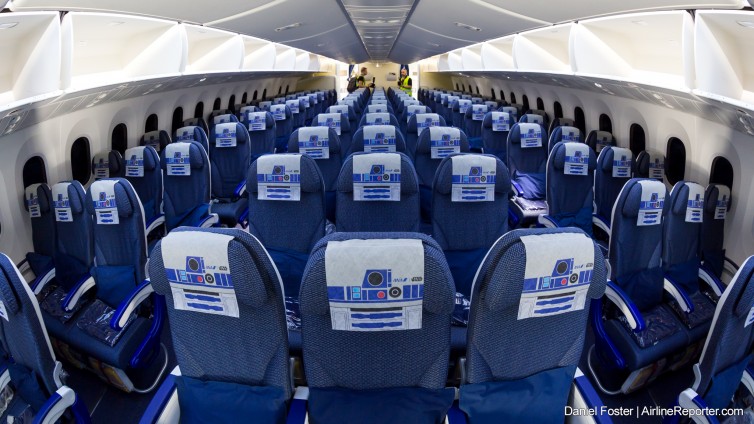
The R2-D2-style seat covers are a cute addition to the aircraft
After a period of rushing around issuing visitor passes to the media crews, the bus had us out at the runway 15 minutes prior to the arrival of the Star Wars Dreamliner. I was also made aware that people had flocked to the airport to witness this spectacle, with all the usual aircraft spotting areas full. Spotting at Sydney Airport can be a challenge to even the most experienced AvGeek, with runway selections seeming arbitrary at times. Fortunately on this occasion, the plane landed on the runway we hoped for.
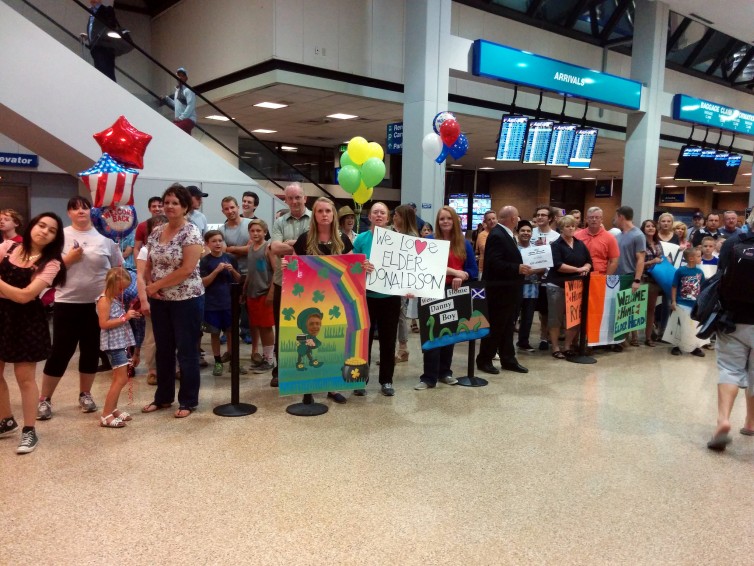
Mormons greet returning missionaries at Salt Lake City International Airport – Photo: Cory Doctorow | FlickrCC
I like flying, but it is also tiring. If I have had a few connections (perhaps some missed connections), a bumpy flight, long layovers, or an extra early wake up call, I’m worn out. When I land, I just want to get off a plane, grab my bags, and get home. I really don’t want anything to get in my way. As I’m walking down the concourse, the last thing I want is for people to hinder me. Get out of my way! You’re not here to greet me.
But, let’s consider both sides of an issue – how should groups behave as a welcoming party at an airport. Sure there are some single folks waiting for their loved one and you also get the families waiting for a child flying by themselves. Going a bit larger (and louder) you can find military service members, who have been gone for a long time, receiving a wonderful “welcome back.” All these people are deserving of welcomings, but can it go too far? How can an airport make it a win-win for everyone? And is there a limit where people should be respecting other passengers? Let’s take a look at an airport close to me, the big homecomings at Salt Lake City International Airport.
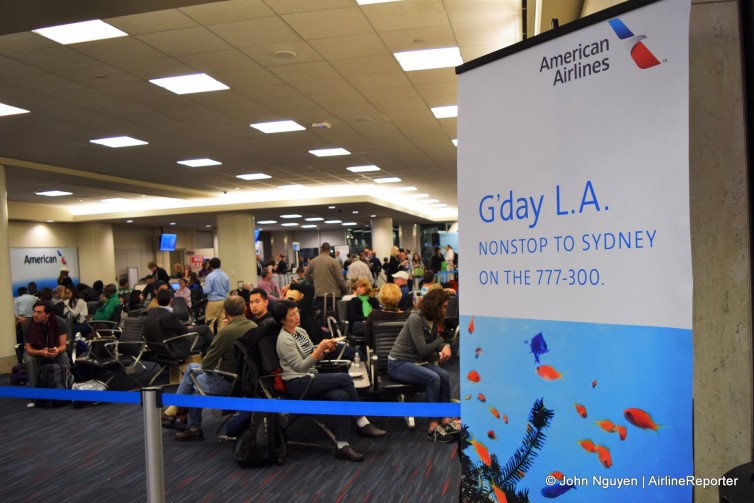
The departure lounge for Gate 41 at LAX, for American’s inaugural flight to SYD. #AvGeeks cringe at this banner…
Updated 12/22/2015 @ 4:38pm PT
Want a chance to win a gift bag, courtesy of American Airlines? Scroll down, leave a comment below, and a winner will be randomly selected!
With critters, music, food, gifts, and didgeridoos on hand, American Airlines celebrated its inaugural flight from Los Angeles to Sydney last Thursday, marking the first time the airline has directly flown to Australia from the contiguous 48 states with its own aircraft, this route featuring its flagship Boeing 777-300ER.
But even hard-core AvGeeks would be hard pressed to focus on the 777 on the other side of the windows when there was a baby kangaroo (WHAT?!)…

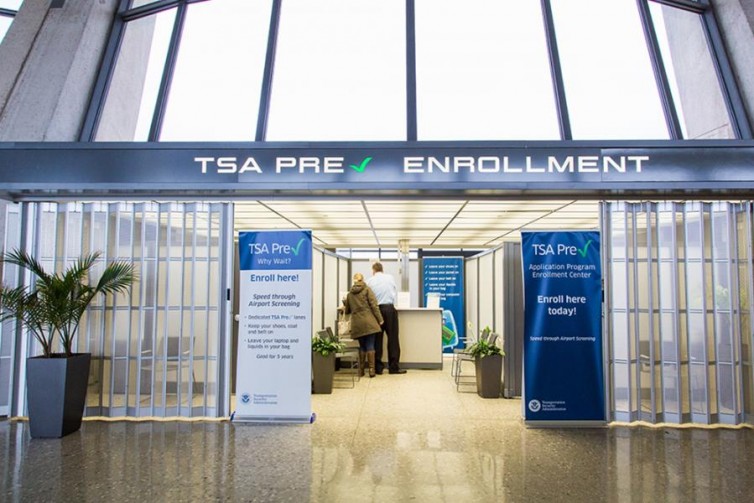
Photo: Department of Homeland Security
Who wants to spend their free time waiting in a long security line? No one. Have you signed up for TSA Pre✓® yet? No joke – it saves you time and stress. It might look a bit confusing at first, but no question, it is worth putting in the effort to make your traveling experience easier. Most of us at AirlineReporter have already signed up, and it has not only saved us time, but also kept us from missing flights!
With TSA Pre✓®, you can:
– Speed through dedicated security lanes
– Leave your shoes, jacket, and belt on
– Leave your computer and 3-1-1 liquids in your bag
Really, you get to bypass all the annoying stuff. Signing up for TSA Pre✓®? Enrollment is simple. You can work with more than 350 conveniently located IdentoGO® Centers around the US — with more than 35 located directly at airports. Start out by visiting their website and filling out a short application. Once your application is complete, bring the required documents to the IdentoGO Center to complete the process.

Image: Department of Homeland Security
The IdentoGO Center staff will capture your fingerprints to submit with your application to the TSA for approval. Your application is only $85 and is good for five years. That’s just $17/year — one of the best deals in travel! Applications are generally processed within two-three weeks, and you will receive notification by mail with your Known Traveler Number (KTN). Use this number when booking all future travel, and then TSA Pre✓® will be automatically printed on your boarding passes.
Who is IdentoGO? IdentoGO manages the Pre✓® enrollment program on behalf of the TSA. They offer electronic fingerprinting, photo services, and criminal history reports, in addition to enrollment in the TSA Pre✓® program. They handle identity-related services to over 4.5 million customer annually – not your fly-by-night sort of operation.
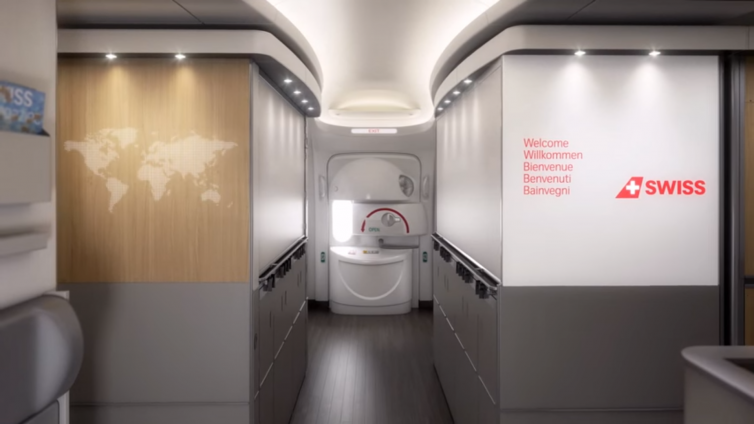
The entry foyer on the new Swiss 777-300ER – Image: Youtube | Swiss
Swiss International Airlines, part of the Lufthansa Group, will take delivery of their first of nine new Boeing 777-300ERs (77W) on January 29, 2016. Miriam Oliviera, the airline’s Head of Marketing & Public Relations for the Americas, confirmed the date in a phone conversation on Thursday.
The 777 series is a new addition to Swiss’s previously all-Airbus fleet. Currently, the Zurich-based carrier relies on the Airbus A330/A340 series wide-bodies for long-haul service, as well as the Airbus A320 series for its narrow-body fleet.






